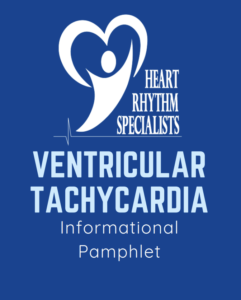What is VT?
Ventricular tachycardia (VT) is a type of abnormal heart rhythm, or arrhythmia. It occurs when the lower chambers of the heart (ventricles) beat faster than they can fill, resulting in insufficient blood flow to the body and lungs.
How is VT Diagnosed?
Dr. Yoo will use a combination of a physical exam, medical history, and testing, which may include:
- electrocardiogram (ECG/EKG)
- Holter monitor
- event monitor
- implantable loop recorder
- stress test
- transtelephonic monitor
- electrophysiological (EP) test
Risk Factors include:
- heart disease
- medication side effects
- family history of VT or other arrhythmias
- use of stimulant drugs
Causes of VT include:
- heart attack
- cardiomyopathy or heart
failure - myocarditis
- heart valve disease
- coronary artery disease
- congenital heart conditions,
including long QT syndrome - imbalance of electrolytes
- certain medications or drugs
Symptoms of VT
When episodes of VT are brief, there may be no symptoms at all. The longer the episode lasts, the more symptoms begin to appear, including:
- rapid heartbeat (palpitations)
- dizziness or lightheadedness
- shortness of breath
- fainting (syncope)
- chest pain (angina)
- cardiac arrest
Treatments for VT
- Depending on the cause, type, and severity of your VT, treatment may include cardioversion, antiarrhythmic medication(s), catheter ablation, or an implantable cardioverterdefibrillator (ICD).
- Reducing the likelihood of a VT event involves making lifestyle changes such as:
- eating a healthy diet
- regular exercise
- maintaining a healthy weight
- managing blood pressure and cholesterol levels
- controlling stress
- stopping smoking and
recreational drug use - limiting alcohol and caffeine
Additional Resources
